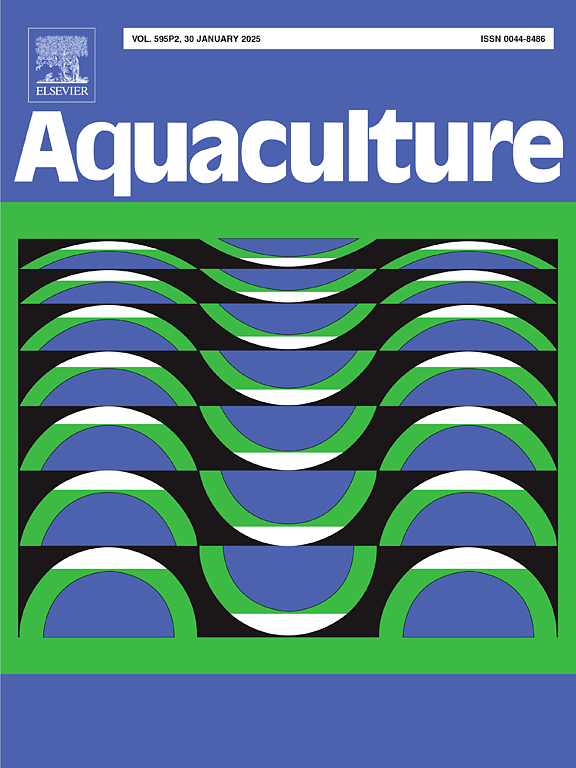Comparing the aquaculture potential of two tropical rock-oyster species in French Polynesia, Saccostrea cucullata and S. echinata
IF 3.9
1区 农林科学
Q1 FISHERIES
引用次数: 0
Abstract
The development of a hatchery-based aquaculture of tropical rock oysters provides opportunities for diversifying food sources in developing countries while maintaining low environmental costs. In the Indo-Pacific region, several species stand out as promising low-trophic candidate species for modern hatchery-production programs, particularly those in the Saccostrea genus. However, no formal studies have compared the productivity of these species, despite the critical importance of this information for effective resource management and planning. Here we first studied the distribution of S. cucullata and S. echinata across four islands in the Society Archipelago of French Polynesia using phylogenetic analyses and multiplex PCR. Secondly, we described the hatchery protocols used for successfully conditioning oyster broodstock, inducing spawning and fertilisation. Lastly, we evaluated the growth performance of oysters at each stage in the hatchery-production process: larval development, nursery growth, and grow-out. Results showed that S. echinata consistently outperformed S. cucullata. Observations during the grow-out phase highlighted the importance of site selection for optimal growth—which correlated with water temperature, salinity, and food availability—while also revealing differences in survival that are potentially associated to the presence of nuisance species (e.g., flatworms, Stylochidae, and predatory snails, Cymatiidae) present in their natural environment. Finally, we found that S. cucullata invests more energy into reproduction than S. echinata, likely explaining the strong differences in growth performance. This study demonstrates the superior performance of S. echinata and its potential as a candidate species for hatchery-based oyster aquaculture in French Polynesia. We recommend that the holistic comparative approach we used here could be considered as a decision-making-tool in aquaculture management widely.
求助全文
约1分钟内获得全文
求助全文
来源期刊

Aquaculture
农林科学-海洋与淡水生物学
CiteScore
8.60
自引率
17.80%
发文量
1246
审稿时长
56 days
期刊介绍:
Aquaculture is an international journal for the exploration, improvement and management of all freshwater and marine food resources. It publishes novel and innovative research of world-wide interest on farming of aquatic organisms, which includes finfish, mollusks, crustaceans and aquatic plants for human consumption. Research on ornamentals is not a focus of the Journal. Aquaculture only publishes papers with a clear relevance to improving aquaculture practices or a potential application.
 求助内容:
求助内容: 应助结果提醒方式:
应助结果提醒方式:


